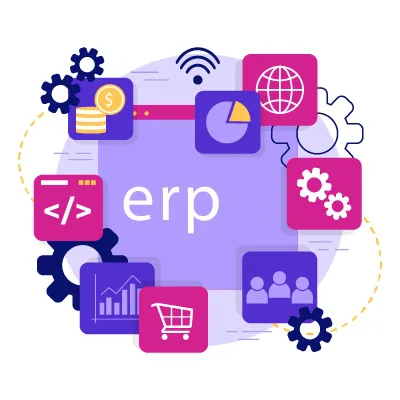ERP Fundamentals
ERP systems are generally designed to use a single, defined data structure (schema) on a common database. This helps normalize the information used across the enterprise, based on general definitions and user experiences.

ERP systems are generally designed to use a single, defined data structure (schema) on a common database. This helps normalize the information used across the enterprise, based on common definitions and user experiences. These core structures are then linked by business processes brought about by workflows in business departments (e.g. finance, human resources, engineering, marketing, operations), connecting systems and the people who use them. In short, ERP serves to integrate people, processes and technologies in a modern company.
For example: Consider a company that manufactures cars by purchasing parts and components from multiple suppliers. Requesting and purchasing these goods can also use an ERP system to ensure that every single component of the entire purchase-to-pay process uses properly formatted and clean data linked to integrated enterprise workflows, business processes, reports and analytics. When ERP is properly deployed to this automotive manufacturing company, for example, the “front brake pads” component; part name, size, material, source, lot number, supplier part number, serial number, cost and technical information, as well as other descriptive and data-driven elements. Because data is the lifeblood of every modern company, ERP makes it easy for any individual and system that needs this information to best fulfill their roles and responsibilities to collect, organize, analyze and distribute this information.
ERP ensures that these data fields and attributes are included in the company's general records with the correct account so that all costs are properly tracked and represented. If front brake pads are called “front brakes” in one software system (or perhaps in a set of spreadsheets), “brake pads” in another, and “front pads” elsewhere, then the automotive manufacturing company needs to know how much is spent on front brake pads per year, change suppliers, or change suppliers. It will be difficult for him to understand whether he should bargain for a good price.
Centralized data collection for wide distribution forms one of the core ERP principles. Instead of using multiple separate databases with a bottomless inventory of unconnected spreadsheets, ERP systems spruce up complexity so that all users, from CEOs to accounts payables, can create, store and use the same data derived from common processes. With a secure and centralized data repository, everyone in the organization can be confident that data is accurate, up-to-date and complete. Without using error-prone spreadsheets, data integrity is ensured for every task performed across the organization, from quarterly balance sheets to outstanding receivables reports.
News That Might Interest You



